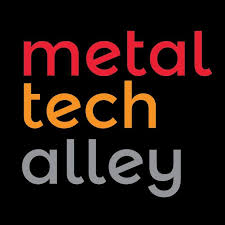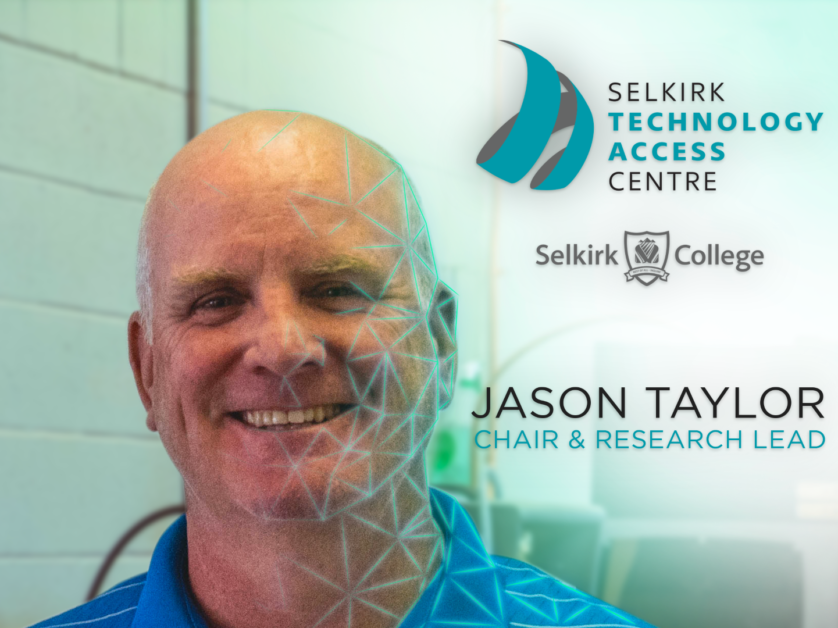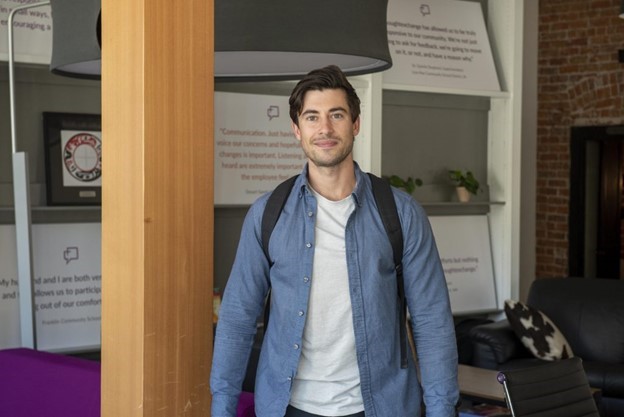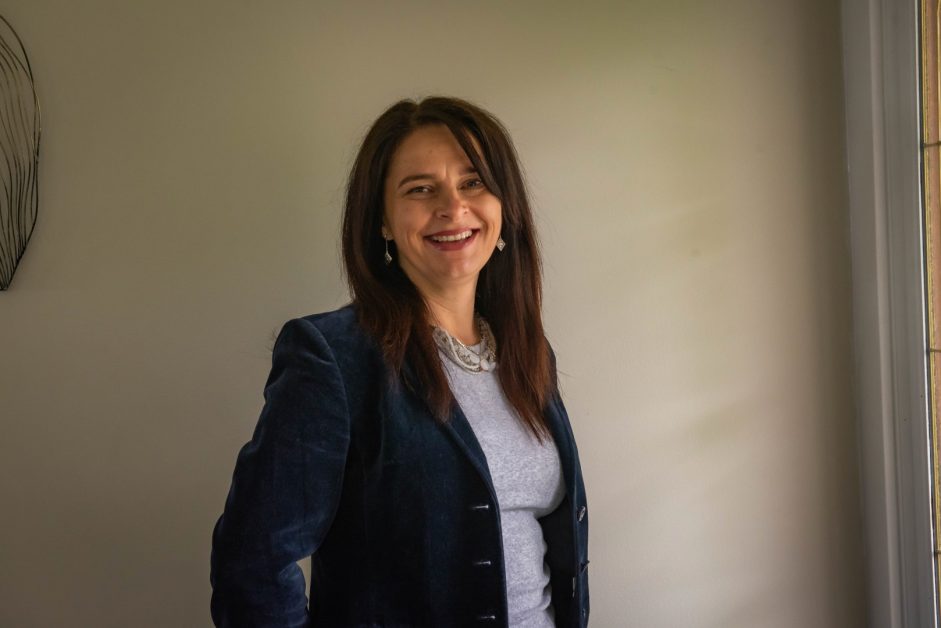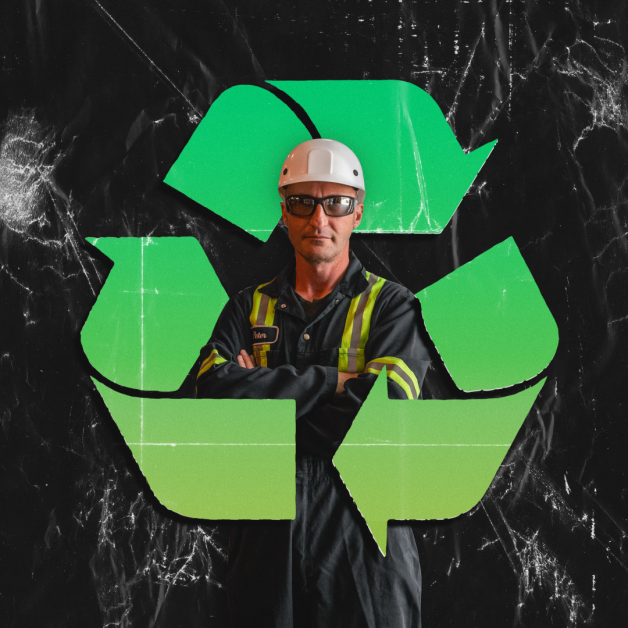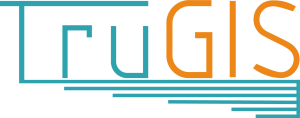Digital arts professional Jason Taylor felt a new sense of intrigue and purpose when he held his animated character in his hand for the first time. That tangible moment of experiencing a design leap from concept to physical model spurred his career at Selkirk College into some radical shifts, and before long he was hooked on deeply investigating advanced manufacturing. Jason has been a respected and beloved instructor and researcher in Applied Research and Innovation at Selkirk College for over 20 years. He’s dedicated to growing the circular economy in Metal Tech Alley and acts as a mentor to many business people in the community, many of whom learned how to use technology under his guidance at the MIDAS Lab turned Selkirk Technology Access Centre (STAC). As Chair and Lead Researcher at STAC, Jason helps industry professionals optimize their operations by investigating and recommending solutions. While supporting professionals from design to manufacturing, Jason has discovered a need for digital fabrication and design specialists and is now filling that void by offering a new program at the college. Jason is hands-on and in the middle of a connected network of professionals as he helps promote and grow the region as an area his kids can learn, work, and live in. He attributes his great lifestyle to the people he surrounds himself with: his family, lifelong friends, and industry partners who have generously supported his ideas. It’s never work when you get to play, innovate, and learn from other professionals who are equally excited about technology’s future.
As STAC’s Chair and Lead Researcher In Advanced Manufacturing, can you tell us more about the new suite of services designed to build competitiveness in research and development?
Absolutely; Selkirk College took over ownership of the former MIDAS (Metallurgical Industrial Development Acceleration Studies) Lab, previously managed by KAST (Kootenay Association for Science and Technology) in April. The main goal of STAC is to help companies look toward the future of manufacturing. What we do is apply new technologies in workflows, help companies prototype new designs, or even come up with manufacturing processes, such as automating safety procedures. We use technical expertise and specialized equipment to advance product design and development through 3D printing and rapid prototyping, 3D scanning and reverse engineering, metrology, and customized advanced technology training; we also provide referrals to existing business services in the region.
I conduct research and work directly with companies on providing solutions. Over the last two years, the college has been granted close to $4 million for research in advanced manufacturing. In May, the Federal Government announced that Selkirk College was part of more than a dozen new technology access centres across the country. The STAC received $1.75 million in NSERC funding as part of the College & Community Innovation Program. This is in addition to the $2 million in federal funding secured last year to support productivity and innovation in advanced manufacturing companies.

How is STAC different from the former MIDAS lab?
STAC is more specialized in the equipment, rather than being somewhat of a generalist facility. We used to have a little bit of everything at the former MIDAS, but now we have staff on site that are ready to help industry and are truly specialists. Specifically, I have a tool and die maker, a machinist, a designer, and then myself—I do a little bit of everything. We have new metrology equipment here as well, which is high-end equipment for the science of measurement. It’s not only for 3D scanning, which we had before; it has a much higher level of tolerance and precision.
Are some industries already benefiting from using STAC?
Absolutely. The pandemic has had some fairly traumatic effects on industry; a lot of industries in BC—tourism, for example—saw a huge downturn. However, there are also huge opportunities. A lot of the smart people that are working in affected industries spent time at home thinking about how they’re going to do something new. We’ve seen a huge increase in industries and companies looking for help bringing new ideas to the market. So we’re busy! We have four really cool manufacturing process projects that will probably be completed at the prototype stage by late September. We’re doing several cannabis industry projects, a project focusing on the outdoor sports industry, and one for the fishing industry. It’s been amazing, and those aren’t even a part of our bigger, longer-term research projects.
Well before COVID-19, engineering firms utilized our staff and our facilities quite a bit; that’s been awesome, and having reciprocal access to their skill sets has been a great resource for us as well. Austin Engineering, for example, initially used our technology and resources to create dam models they hydraulically and seismically tested. We helped I/O Design & Engineering move into VR and augmented reality, which they took to another level. Redwood Engineering is currently looking at the 3D scanning and reverse engineering services we provide. We’re also working with Teck, Celgar, and Fortis—all the big players—but what really excites me is the smaller companies in the region that are doing mind-blowing things. There’s a company outside of Nelson called Twente that has a massive 3D printer that’s printing concrete; they’re building retaining walls and stairs and already have half a building 3D printed—it’s unbelievable!
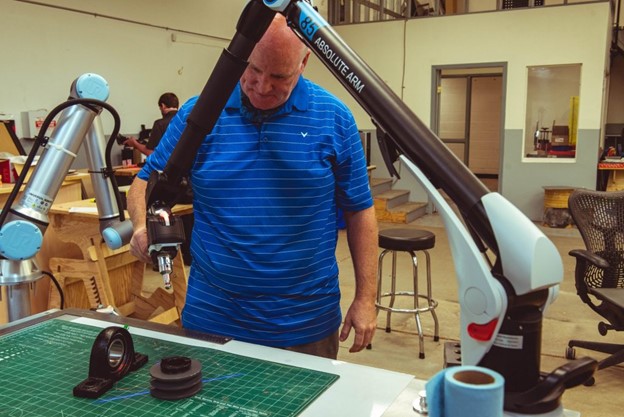
Can you describe a pivotal moment in your career?
There have been several moments in several careers. As a computer animator, getting hired on with the animation studio Mainframe and working on a project called ReBoot in the early 90s was a big one. Then there was getting hired by Selkirk College and given several million dollars to start the Digital Arts and New Media program 20-some-odd years ago. Helping build the MIDAS lab five years ago was such an amazing moment, too. The forethought or insight into what’s possible from the team at KAST at that time—people like Erin Handy, Amber Hayes—was a game changer. The college allowing me to be part of the early decision-making process was a huge opportunity. I was asked to provide insight in regards to some of the equipment, software, programming, and access to the building. I also helped install and commission a lot of the equipment and machines at the very beginning, which was a great opportunity to learn and then share my knowledge.
I’ve always been very fortunate to be surrounded by really smart people; we share learnings and ideas and methodology and workflows all the time. I have incredible bosses, Rhys Andrews (Vice President, Education) on the academic side and Terri Macdonald (Director of Applied Research and Innovation) on the research side—she is amazing. Everyone talks about lifestyle—and I think lifestyle is a part of it—but really it comes down to the people. When I was a kid, I couldn’t wait to get out; now I definitely like to visit Vancouver or other bigger centers, but I can’t wait to get back home. There are just some really amazing people that I work with every day, and how generous the industry partners are to the community is really key for me. I don’t work, I come here to play every day. When you’re learning and you don’t know that you’re learning, it’s a pretty amazing thing.

How does your work in research and education contribute to community retention?
It’s all about how to keep really smart and talented people here. I look back to growing up in Rossland, and like I said, everyone I grew up with left—we couldn’t wait to leave! But if there were programs or opportunities like there are now, there’s no way we would have left. It’s a no-brainer when you have access to a facility like STAC and can be trained in technologies and equipment that you never dreamed would be here. Like a 3D metal printer in Trail? Really?
I think I’ve been very lucky to be able to focus my energy on what I see as very worthy causes. Pitching ideas that I knew were going to help this community, and primarily students in this area, has led to amazing opportunities. At the college we’re paid to keep up with professional development, which is a huge asset for me. When we’re looking at new technologies and programming without a lot of available training, we’ve been fortunate to be able to create it. That’s why we’re starting a new Digital Fabrication & Design program in September; there aren’t many programs like it worldwide.
Over the life of MIDAS and now STAC what we’ve seen is the need for these jobs, and for these trained people to provide industry partners with a very, very specific skill set. A lot of time challenges arise between an engineer’s design and a company’s manufacturing, so this new program really takes the opportunity to make somebody that’s the in-between, someone that understands design and fabrication and can help alleviate a lot of those bottlenecks. By offering education in this fast-growing field, we’re developing young professionals here as well as attracting others to the region.
How did your work pivot during the pandemic? And what kind of long-term impact do you think COVID-19 will have on education?
Right from the beginning, the college was deemed an essential service, so we were mandated to help in any way we could. While that was probably a little difficult for a math instructor, we had a fantastic lab at our disposal. At that time, we only had one student on-site so there were literally only three of us in that first month when everything was shut down. We sent the equipment home with our staff and student. We were lucky to hook up with the team at Austin Innovation to help make face shields and other medical and PPE equipment. So that was a good start to at least keep us busy! After that first month, we were able to set up protocols and procedures so we could safely come into the lab as well as work remotely.
The impact of COVID-19 on education is being felt across the province and the country already, primarily due to a significant drop in international students. That will be a big impact for us. But teachers and students are very quickly finding new ways to learn and to share their ideas. Having a program completely go online in one week was amazing. It was amazing that the college IT department could handle that and roll it out. It wasn’t perfect, but if somebody asked me 10 years ago or even five years ago if it was an option, I would have said no; but they did it!
There is still a lot of learning to do, but I live with that every day; in rapid prototyping, it’s all about does it look perfect? No. Did it work? Yes. Then while we’re testing it or making iterative design changes, we have a chance to perfect it. But it doesn’t have to be perfect to start. It sounds bad, but it’s really all about failure, and whether you can take the failure and learn from it and make it better. You know life is all a bunch of (hopefully) small failures and trying to get past those and just keep going and learning. That’s what we do here every day.
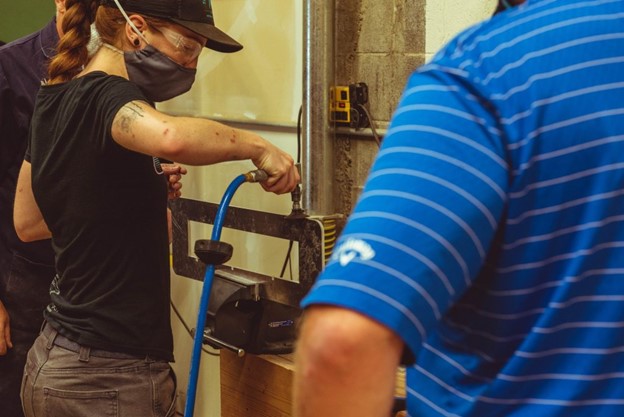
How will further technological advances impact the economy?
Well a big one here is having a trained, highly skilled workforce. Now that workers are getting paid more, they’re wanting to be at work rather than having the “it’s just a job” mentality. There are new opportunities in manufacturing, too; things that are currently manufactured in China are being moved to local manufacturing processes. That cuts down on transportation, hires more local people, and often produces a higher quality product. At some point the almighty dollar takes over, but getting away from that and making it more like the almighty person or community is a goal for me. It would be amazing to be able to produce and manufacture essential goods and services locally, and not rely so much on shipping and transportation.
Our job here at STAC is offloading initial startup costs, like those associated with bleeding-edge technology. Getting equipment and testing it out to see if it’s really what you need costs hundreds and hundreds of thousands of dollars, but if we can facilitate that, and we’re supported by provincial and federal government research funding, we can help with the leg work. We help companies like XL Quality Industrial Services, for example, by providing digital fabrication services and training while they support larger fabrication services the STAC cannot handle. Testing for the right technology for businesses to invest in is going to help with hiring more trained people and reducing manufacturing costs. That’s what we’re here for: to do the initial heavy lifting.
Visit STAC:


